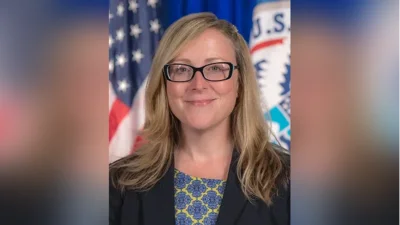Jose M. Tirado Executive Director, Office of Emergency Management and Communications, City of Chicago | LinkedIn
Jose M. Tirado Executive Director, Office of Emergency Management and Communications, City of Chicago | LinkedIn
The City of Chicago has been recognized for its leadership in bystander CPR (B-CPR), with a notable 14.6% increase between 2021 and 2023, according to the latest report from Illinois Heart Rescue. The report credits the role of the Office of Emergency Management and Communications’ (OEMC) telecommunicator-assisted CPR (T-CPR) program for this achievement.
The Illinois Heart Rescue report highlights key survival and CPR rates, along with trends from emergency medical services (EMS) 9-1-1 calls. OEMC’s Fire Call Takers have been acknowledged both locally and nationally for their role in delivering life-saving CPR instructions. "CPR is a critical first step to ensuring the survival of cardiac arrest before first responders arrive,” commented Frank Velez, Acting Executive Director of OEMC.
A survivor story highlighted in the report involves Joanne Walton, who was saved by her family following CPR instructions given over the phone by OEMC telecommunicator Stefanie Velez during a crisis at Walton's home in 2024. This story exemplifies the importance of T-CPR in emergency situations.
Illinois Heart Rescue, a nonprofit organization, focuses on enhancing survival rates for out-of-hospital cardiac arrest (OHCA) victims. The organization’s Executive Director, Courtney Schwerin O’Reilly, praised the collaboration with OEMC and the Chicago Fire Department, highlighting the city’s achievements in gender and racial equity for B-CPR.
The OEMC report shows that focusing resources on T-CPR has improved B-CPR rates and achieved both gender and racial parity in Chicago. The report emphasizes the importance of bystander CPR, noting that survival rates decrease by 10% for every minute CPR is delayed.
Since 2020, efforts have been concentrated on improving telecommunicator recognition of cardiac arrest incidents and timely delivery of CPR instructions. Key metrics were established in partnership with Region 11 EMS and OEMC to track dispatchers’ efficiency in recognizing the need for CPR and guiding those on the scene. These initiatives contributed to a substantial increase in CPR recognition and survival rates across various demographics in Chicago.
For further information on OEMC and to receive alerts from Notify Chicago, residents are encouraged to visit the OEMC website and follow their social media channels.






 Alerts Sign-up
Alerts Sign-up